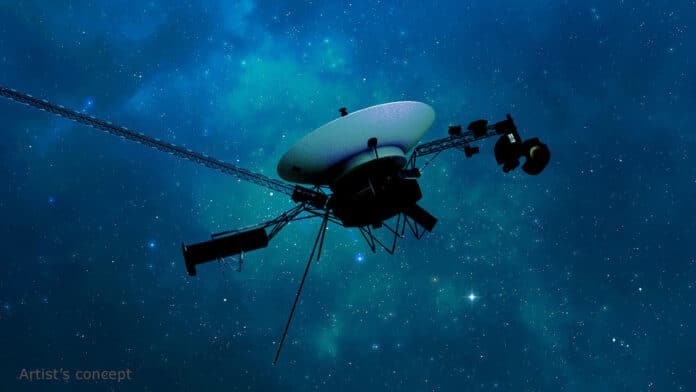NASA’s Voyager mission engineers are taking steps to help ensure both spacecraft, launched in 1977, continue exploring interstellar space for years to come. The team is preparing a software patch that will allow the thrusters on Voyager 1 and Voyager 2 interstellar probes to continue operating for at least five more years.
The effort addresses fuel residue that seems to be accumulating inside narrow tubes in some of the thrusters of the spacecraft.
The Voyager 1 and Voyager 2 spacecraft primarily use thrusters to keep their antennas pointed at Earth for communication purposes. These spacecraft can rotate in three directions – up and down, left and right, and around the central axis. During rotation, the thrusters automatically fire to keep the antennas pointed at Earth.
However, each thruster firing adds tiny amounts of propellant residue inside the propellant inlet tubes that are 25 times narrower than the external fuel lines. This leads to a gradual buildup of material over decades, and too much buildup could clog the fuel lines, affecting the spacecraft’s performance.
To slow that buildup, NASA engineers are working on a software patch that will let the two spacecraft rotate slightly farther in each direction before firing the thrusters, reducing the frequency of firings. While more rotating by the spacecraft could mean bits of science data are occasionally lost, the team concluded the plan would enable the Voyagers to return more data over time.
“This patch is like an insurance policy that will protect us in the future and help us keep these probes going as long as possible,” said JPL’s Suzanne Dodd, Voyager project manager. “These are the only spacecraft to ever operate in interstellar space, so the data they’re sending back is uniquely valuable to our understanding of our local universe.”
In addition, the software patch will help prevent the recurrence of a glitch that arose on Voyager 1’s attitude articulation and control system (AACS) last year to misdirect commands.
Voyager 1 and Voyager 2 have traveled more than 15 billion and 12 billion miles from Earth, respectively. This means that the patch instructions will take over 18 hours to travel from Earth to the spacecraft. Due to the spacecraft’s age and the communication lag time, there’s a risk that the patch could overwrite essential code or have other unintended effects on the spacecraft.
As a result, Voyager 2 will receive the patch first and serve as a testbed for its twin. Voyager 1 is farther from Earth than any other spacecraft, which makes its data more valuable.
While engineers cannot be certain when the thruster propellant inlet tubes will become completely clogged, they hope that with the precautions they have taken, it won’t happen for at least five more years and possibly much longer. In the coming years, the team plans to take additional steps to further extend the lifetime of the thrusters.
“This far into the mission, the engineering team is being faced with a lot of challenges for which we just don’t have a playbook,” said Linda Spilker, project scientist for the mission at NASA’s Jet Propulsion Laboratory in Southern California. “But they continue to come up with creative solutions.”
